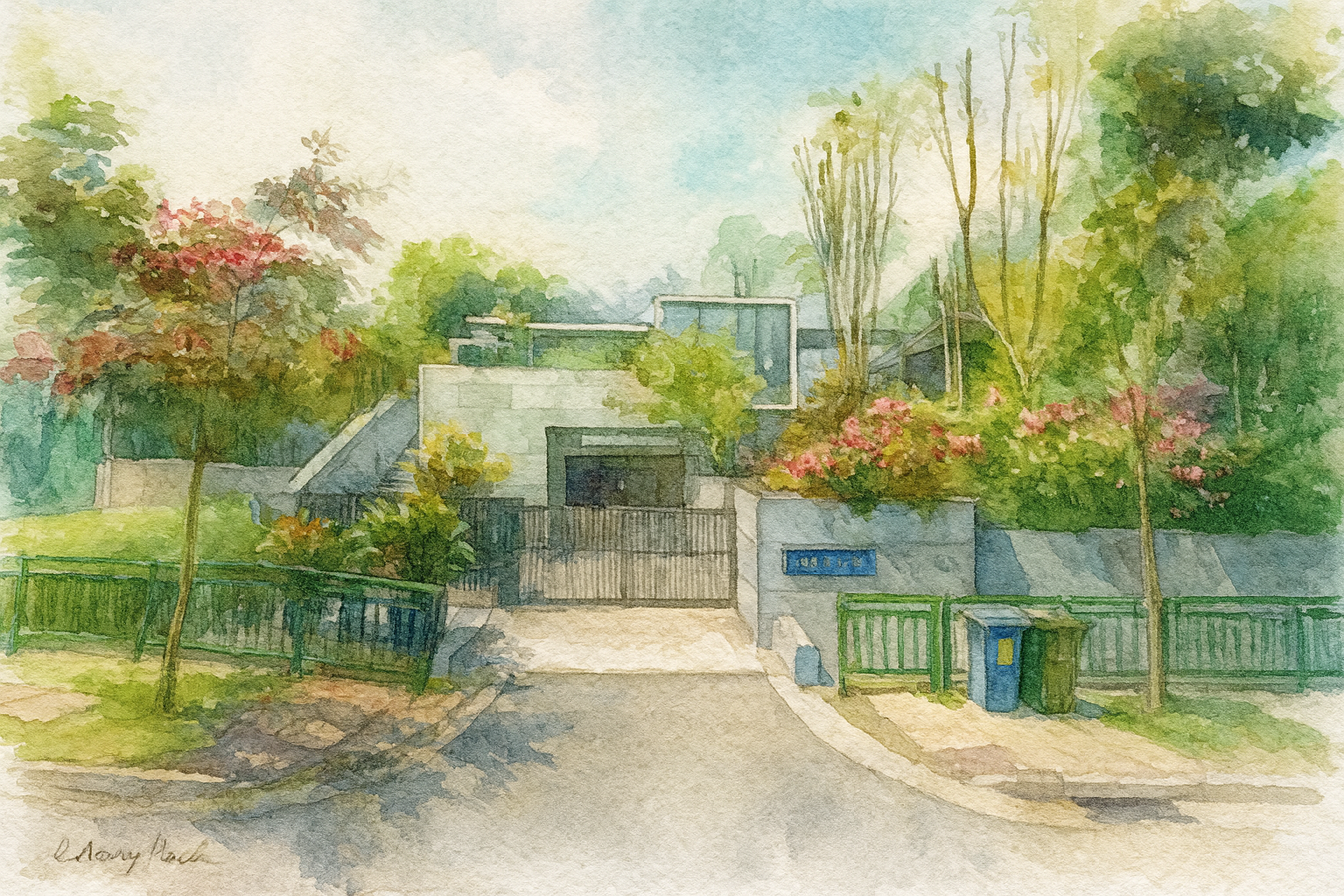How Much Does It Cost To Live In Cluny Park in 2025
There are GCBs and then there is Cluny Park. It’s a name that carries the quiet gravitas of Singapore’s landed aristocracy where homes are shielded by century-old rain trees, and where the Botanic Gardens forms both backdrop and boundary.
Cluny Park wraps around Singapore’s only UNESCO World Heritage Site. That alone places it in a league of its own.
From a planning perspective, the Botanic Gardens acts as a permanent green buffer, meaning no new developments, no high-rises, no noise intrusion.
To the ultra-wealthy, this equates to guaranteed tranquillity and protected views. Luxuries that even money cannot buy elsewhere in land-scarce Singapore. It’s the same principle that drives London’s most expensive homes that border Hyde Park or New York’s Fifth Avenue properties that face Central Park.
Also, the Cluny Park GCB area has, in recent years, become a hive of quiet construction activity — not just one or two rebuilds, but an entire street in motion. From additions and alterations to full-scale redevelopments, the pattern is unmistakable: owners are reinvesting, not retreating.
Each new façade and foundation is a signal of permanence — a declaration that those who own here are planting their flag for the long haul, not passing through.
Why Cluny Has Always Been Different
Ask any seasoned agent or architect what makes Cluny Park so special, and you’ll get a dozen different answers , all partly true.
Some say it’s geography.
Bordering the Botanic Gardens, Cluny Park is one of the few places in Singapore where your “backyard” is a UNESCO World Heritage Site. The land is elevated, the air feels cooler, and the streets are lined with rain trees that have stood longer than most buildings downtown.
Others point to its lineage.
Cluny was never a speculative playground. The families who bought here decades ago rarely sold; they rebuilt, renewed, and passed their plots down. That continuity of ownership created an invisible gate, not of walls, but of tradition.
Some call it the perfect paradox.
It’s central yet hidden, opulent yet understated. You can drive to Orchard in five minutes, but you’d never know Orchard exists when you’re here. The absence of noise, billboards, and condo towers creates a kind of peace that money elsewhere can’t buy.
And then there’s the intangible.
A certain stillness that lingers when you turn off Cluny Road, the kind that makes visitors instinctively lower their voices.
We can guess at the reason but perhaps the real answer is that Cluny doesn’t need to explain itself. Its allure lies in the unspoken understanding that some places are special simply because they are.
Past Transactions
Past transactions only tell half the story. Many owners here simply don’t sell—so recorded prices lag reality. Based on current ask levels and buyer profiles, S$3,000+ psf for a well-maintained or newly rebuilt home in this belt would not be a stretch.
| Contract Date | Address | Type | Tenure | Area (sqft) | PSF | Price | Sale Type |
|---|---|---|---|---|---|---|---|
| 18 Mar 2020 | *Cluny Park | Detached House | Freehold | 20,369 | $1,964 | $40,000,000 | Resale |
| 19 Jun 2017 | *Gallop Park | Detached House | Freehold | 17,043 | $1,343 | $22,888,000 | Resale |
| 06 Jul 2016 | *Gallop Park | Detached House | Freehold | 16,306 | $1,030 | $16,800,000 | Resale |
| 24 Jan 2025 | *Gallop Park | Detached House | Freehold | 16,306 | $3,557 | $58,000,000 | Resale |
Cost Breakdown
Cluny Park sits in the uppermost tier of the GCB hierarchy, where land is valued more like an heirloom than an asset.
Below is a simplified cost matrix based on standard plot sizes and recent benchmark land rates observed within the Cluny–Gallop belt.
| Plot Category | Typical Land Size (sqft) | Low @ $2,000 psf | High @ $3,500 psf |
|---|---|---|---|
| Entry GCB | 15,000 | $30,000,000 | $52,500,000 |
| Mid-Tier Plot | 20,000 | $40,000,000 | $70,000,000 |
| Trophy Plot | 25,000 + | $50,000,000 + | $87,500,000 + |
Figures are derived from recent land-rate benchmarks (≈ $2,000 – $3,500 psf) applied to standard GCB plot sizes.
These estimates are non-indicative and may vary depending on transaction date, zoning, plot regularity, elevation, and the physical condition of each property.
Financing Breakdown
| Tier | Purchase Price | Loan Amount (75%) | Monthly Repayment (Est.) |
|---|---|---|---|
| Entry GCB | $30,000,000 | $22,500,000 | ≈ $83,000 / month |
| Mid-Tier Plot | $40,000,000 | $30,000,000 | ≈ $111,000 / month |
| Trophy Plot | $50,000,000 | $37,500,000 | ≈ $139,000 / month |
Financing estimates assume 2 % interest, 75 % LTV, and a 30-year tenure.
In practice, most transact with conservative or minimal financing, often to preserve liquidity rather than necessity.
So, how much does it cost to live on Cluny Park?
At today’s levels, a typical 20,000-sqft plot sits between S$40 million and S$75 million and that’s before considering the quiet premiums commanded by its neighbours facing the Gardens.
Here, value isn’t just measured in square feet, but in stillness, lineage, and the luxury of permanence.
